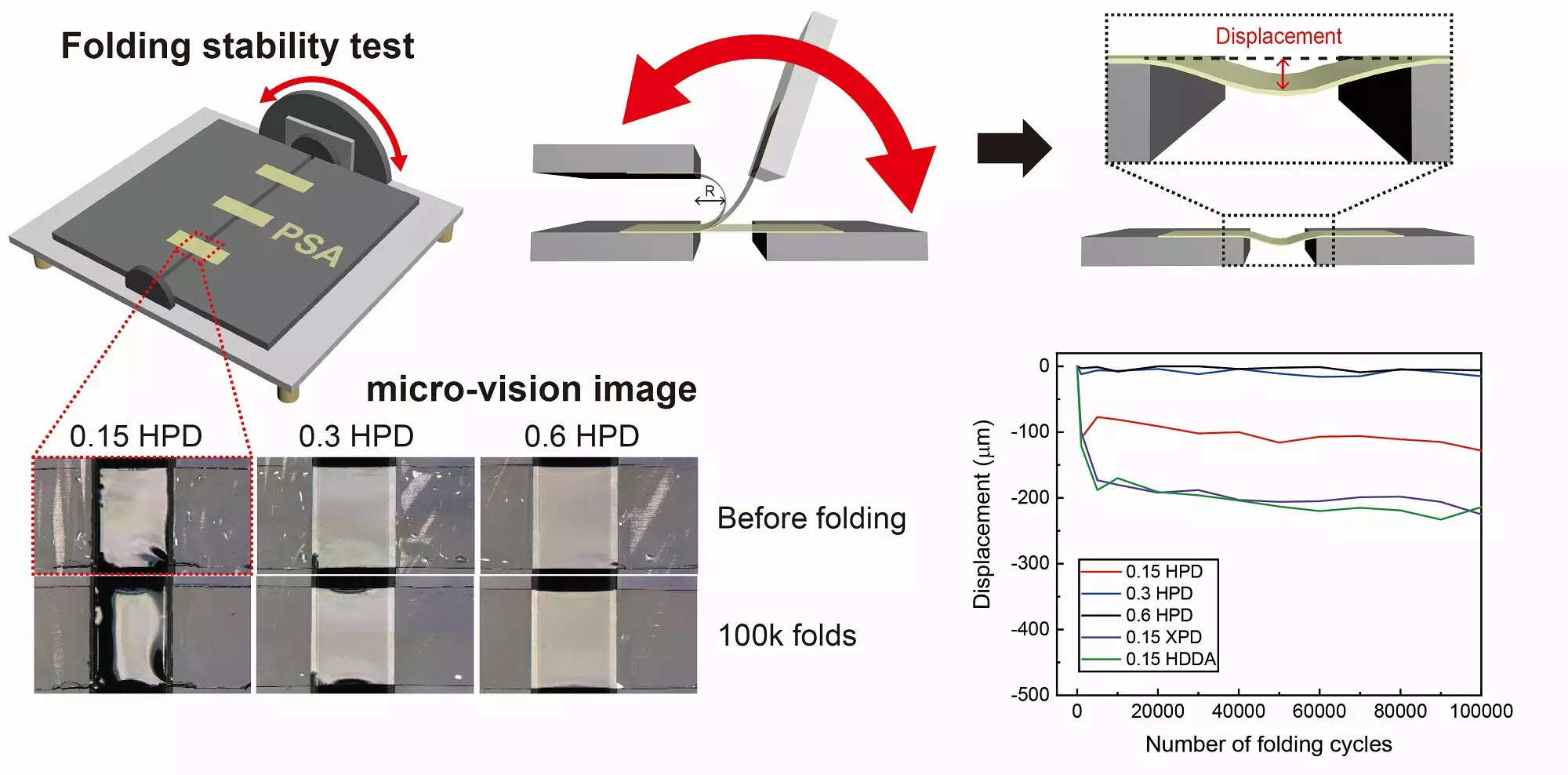Rapid advancements in flexible electronic technology have given rise to a plethora of innovative devices, including foldable displays, wearables, e-skin, and medical devices. However, the development of these devices presents a new challenge – the need for flexible adhesives that can both recover their shape quickly and effectively connect various components. Conventional pressure-sensitive adhesives (PSAs) have struggled to strike an optimal balance between recovery capabilities and adhesive strength.
A groundbreaking study conducted at the UNIST (Ulsan National Institute of Science and Technology) sought to address this critical challenge. Led by Professor Dong Woog Lee from the School of Energy and Chemical Engineering at UNIST, the research team successfully synthesized new types of urethane-based crosslinkers. These crosslinkers utilized m-xylylene diisocyanate (XDI) or 1,3-bis(isocyanatomethyl)cyclohexane (H6XDI) as hard segments, combined with poly(ethylene glycol) (PEG) groups serving as soft segments.
By incorporating these newly synthesized materials into pressure-sensitive adhesives, the researchers achieved significantly improved recoverability compared to traditional methods. The PSA formulated with H6XDI-PEG diacrylate (HPD) demonstrated exceptional recovery properties while maintaining high adhesion strength (~25.5 N 25 mm−1). Through extensive folding tests totaling 100k folds and multi-directional stretching tests spanning 10k cycles, the PSA crosslinked with HPD exhibited remarkable stability under repeated deformation. This showcases its potential for applications that require both flexibility and recoverability.
In addition to its impressive recovery capabilities, the adhesive also displayed high optical transmittance (>90%) even after subjecting it to strains up to 20%. This optical clarity makes it suitable for fields such as foldable displays, which demand not only flexibility but also clear visibility.
Professor Lee expressed his excitement about the breakthrough in adhesive technology, recognizing its potential for electronic products that require high flexibility and rapid recovery characteristics. He believes that this research addresses the long-standing challenge of balancing adhesion strength and resilience in flexible electronic devices, opening up new avenues for their development.
Hyunok Park, a researcher involved in the study, emphasized the significance of this research by highlighting the exceptional adhesion and recovery properties of the adhesive made possible by the introduction of the new crosslinking structure. This development marks a significant step forward in the field of flexible electronic technology and adhesive materials.
The rapid progress in flexible electronic technology has paved the way for the creation of innovative devices. However, the demand for flexible adhesives that can both recover their shape quickly and maintain strong adhesive strength has posed a challenge. The UNIST study has successfully addressed this challenge by developing novel crosslinkers that significantly improve recoverability in pressure-sensitive adhesives. With the potential to balance flexibility, recovery, and optical clarity, this breakthrough offers promising possibilities for the future development of flexible electronic devices.


Leave a Reply